This data was originally featured in May 18th, 2022 the newsletter found here: https://www.trustinsights.ai/blog/2022/05/inbox-insights-may-18-2022-the-unaware-audience-micro-forecasting-recommendation-engines/
In this week’s Data Diaries, we dig into predictive forecasting of a different nature: very short-term forecasting, or micro-forecasting. Most of the time, we use predictive analytics to forecast ahead by weeks or even months. But for some businesses, micro-forecasts down to the hour may be helpful in ways that larger forecasts are not.
Let’s take a look at an example. Suppose you’re a local restaurant. You send out email marketing and maybe even text messaging marketing on a regular basis to your customers. When would be the best time to reach them?
Conventional wisdom might say to reach out at or near mealtime, at supper time. And that’s not necessarily incorrect; anyone who’s ever had a conversation with a partner, friend, or roommate has inevitably had the “what do you want for dinner” debate, often with an impulsive choice at the end.
But when it comes to marketing and demand, the earlier we can intercept demand while still being relevant, the better. Demand interception is the companion to demand generation; instead of trying to stimulate demand for a product or service that our audience may or may not want, it’s easier to intercept the audience’s demand. To our audience, it almost feels like magic when we get it right: “Somehow you knew exactly what I was thinking just as I thought about it.”
To identify that kind of demand, one of the best resources to use is search data. People will search for something online long before discussing it with someone else. Suppose we took a simple search query like “dinner ideas”. What would it look like if we charted out this very popular musing? Using the free Google Trends software, we initially start here:
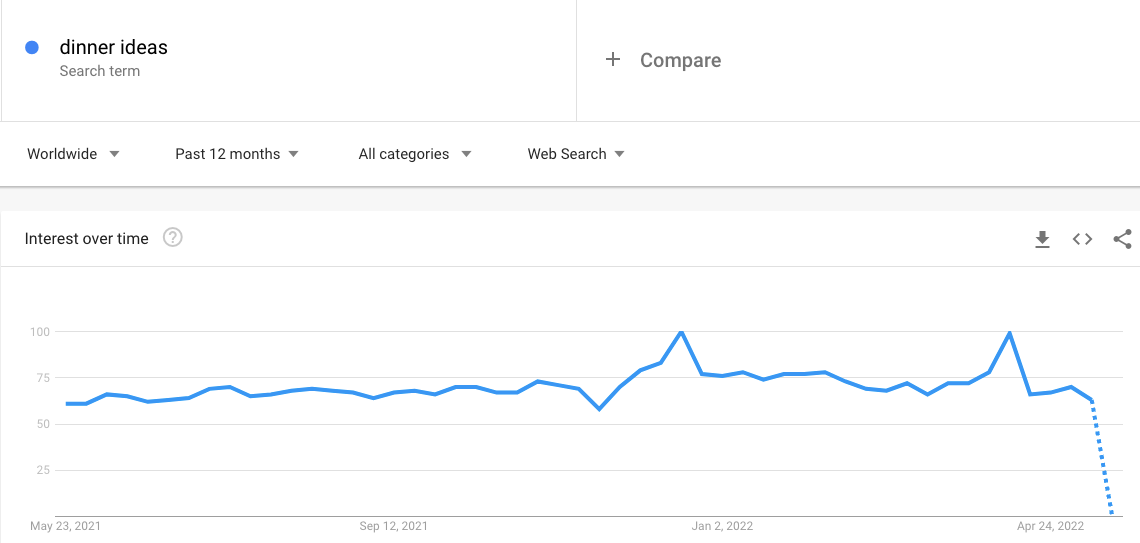
At this scale, there isn’t much usefulness here. Let’s zoom down to one locality – Massachusetts in the USA (where Trust Insights is headquartered), and one week’s time:
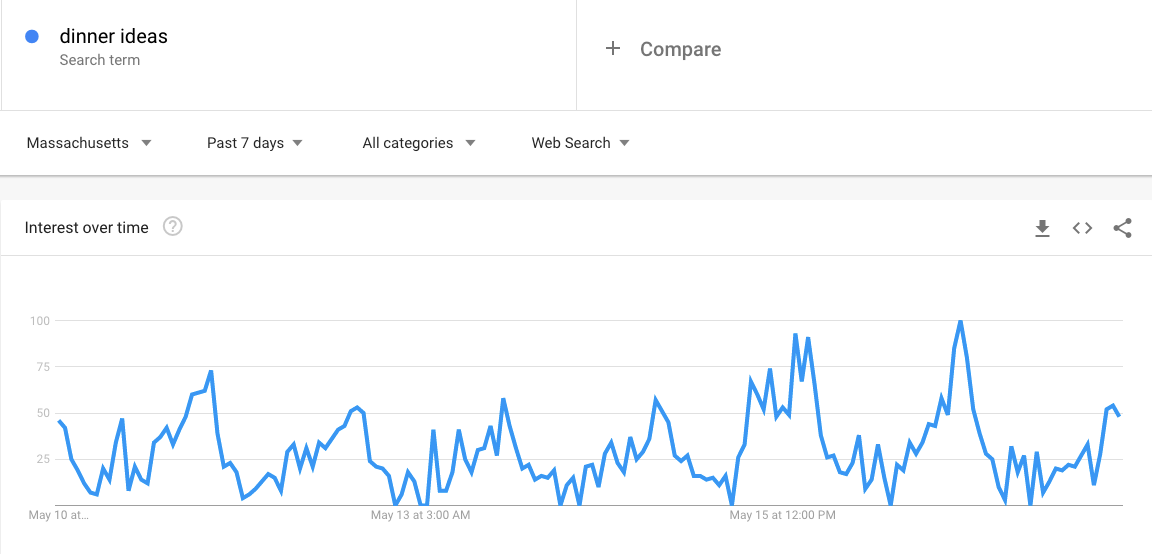
Now we’re talking. We can see data at the hourly level rather than at the weekly level in the broad forecast. What we also see is very strong cyclicality – a clear rhythm like a heartbeat in the data. When you see cyclicality, it means you have the ability to predict with accuracy. Let’s summarize it by hour:
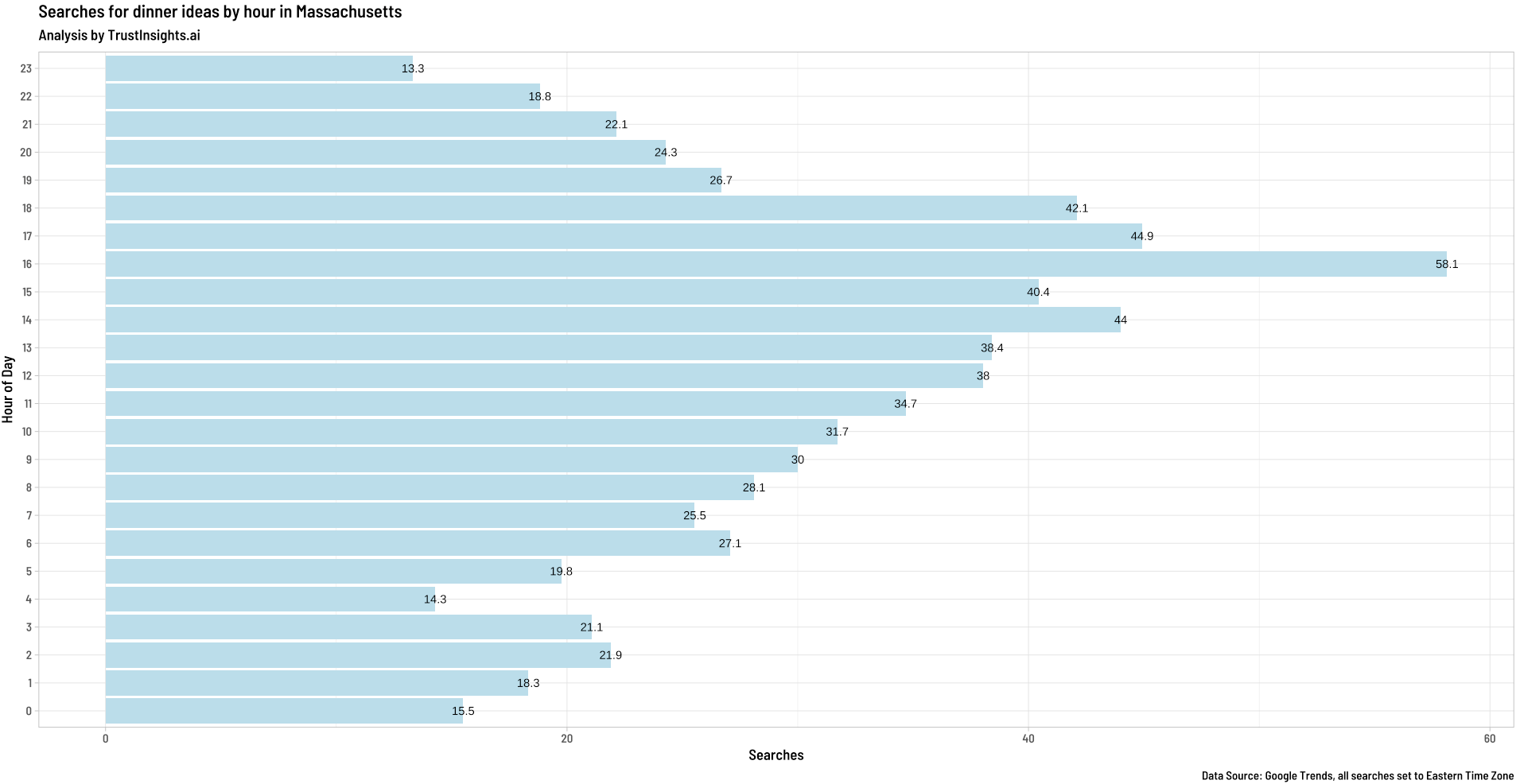
We see that the peak time for searches in Massachusetts for dinner ideas is 4 PM Eastern Time, but we also see that the searches begin as early as first thing in the morning. There’s a substantial bump around 11 AM. So, knowing this, what’s next?
Our next logical step would be to create a forecast. Using the modeltime package in the R programming language, let’s forecast forward for the next 7 days when searches for “dinner ideas” would occur in Massachusetts:
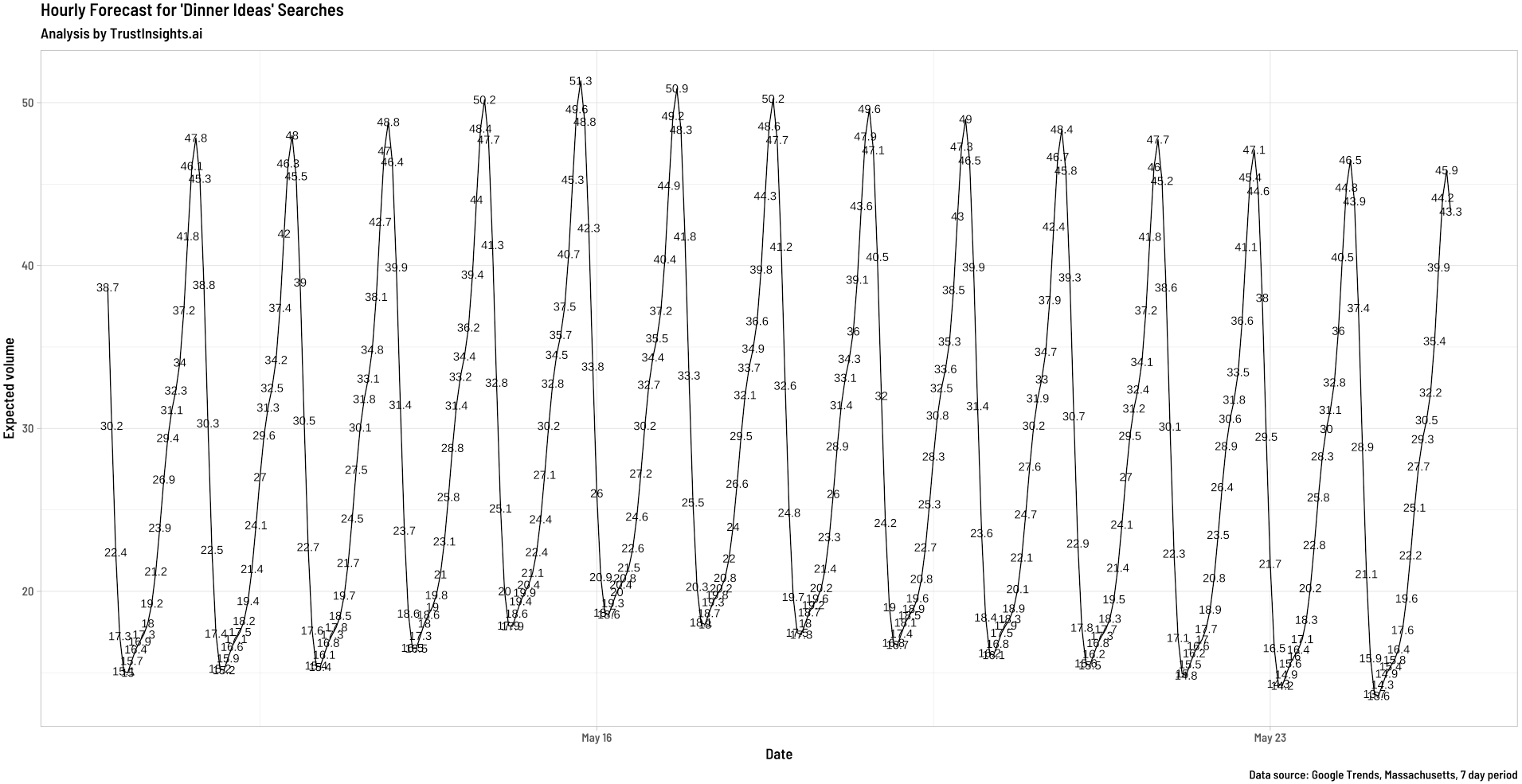
We see the same kind of cyclicality here that we saw in the trend data; so far, so good. The forecast doesn’t look like some crazy distorted model that in no way reflects the reality of the data fed into it – a real problem with some kinds of forecasts. Always reality-check a forecast before using it.
What does the forecast say for the coming week?
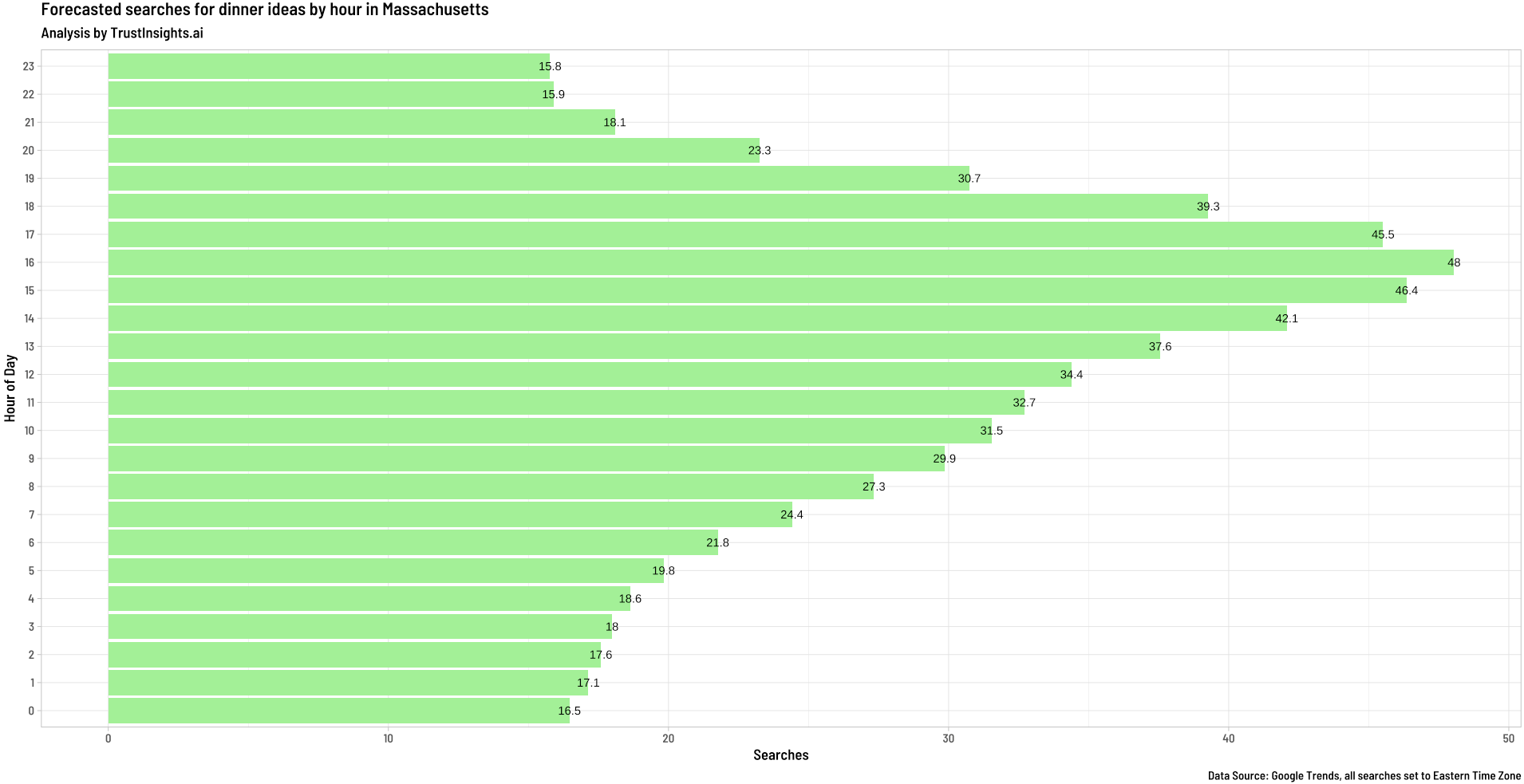
We see the inflection towards peak volume right around 1 PM, with a maximum value at 4 PM. If you wanted to capture demand, what would you do with this information? If I had the usual array of marketing channels available, I’d send out an email around 11 AM, knowing that it takes people a little while to check their email, and I’d get text messages to customers around 2 PM, just an hour before the golden demand peak from 3-5 PM.
Remember that we don’t want to try capturing the demand at the time it happens – we want to be just ahead of it so that we have share of mind when our audience starts thinking about the problem, but not so far ahead that we seem irrelevant. At the start of this newsletter, Katie mentioned the unaware audience, the audience that was unaware of the problem. Someone searching for dinner ideas isn’t that audience – they’re aware of the problem and starting to look for generic solutions. That’s the time for demand interception.
Micro-forecasting is one of the techniques we can use for demand interception – by being in the right place at the right time, just before our audience really starts thinking about the solution to their problem, we can jump the line of potential solutions. If your business or industry is well-suited to micro-forecasting, give the technique a try.
Disclosures and Methodology: Trust Insights extracted hourly data from Google Trends for the term “dinner ideas” in the US-Massachusetts geography. The timeframe of the data is May 1-May 17, 2022. The date of study is May 18, 2022. Trust Insights is the sole sponsor of the study and neither gave nor received compensation for data used, beyond applicable service fees to software vendors, and declares no competing interests.
|
Need help with your marketing AI and analytics? |
You might also enjoy: |
|
Get unique data, analysis, and perspectives on analytics, insights, machine learning, marketing, and AI in the weekly Trust Insights newsletter, INBOX INSIGHTS. Subscribe now for free; new issues every Wednesday! |
Want to learn more about data, analytics, and insights? Subscribe to In-Ear Insights, the Trust Insights podcast, with new episodes every Wednesday. |






